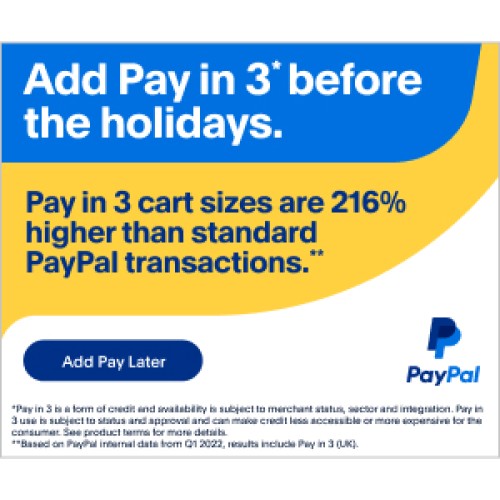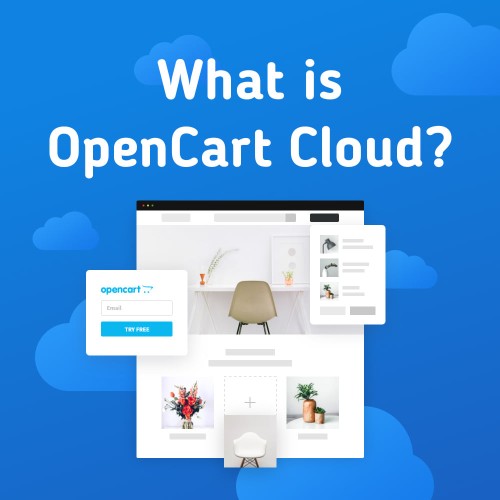The e-commerce industry is filled with opportunities for businesses that optimize for growth. Especially for small businesses, their e-commerce ventures can yield significant growth and increase in sales by applying simple methods to attract more customers and help push them forward from marketing into the sales pipeline.
Statistically speaking, the conversion rate for e-commerce businesses has been steadily increasing. When viewed YoY, the conversion rate has increased by 6.19% between June 2022 and June 2023, as discovered by IRP:
[Image source: IRP]
As businesses vie for consumer attention in their online stores, small businesses must respond by optimizing their marketing and sales strategies to improve conversion rates. One important element to consider is the website design. A user-friendly, responsive, and visually appealing site can significantly enhance the user experience, making the customer’s journey from browsing to purchase more seamless. And speaking of superior web designs, businesses seeking top-tier services tailored to their unique needs can explore options like Elite Legal Marketing.
This blog will shed light on several simple tips and tricks that small businesses can adopt to improve their conversion rates without the enormous expense of resources.
What is E-commerce Conversion Rate?
Conversion rate is the ratio of the total number of orders placed on an e-commerce platform and the total number of visits to the store for a given period of time. It is expressed as a percentage.
In simpler terms, if an e-commerce store gets 10,000 visitors for one month but only receives 1,000 orders, the conversion rate would be (1,000/10,000) x 100 = 10%. If you look at the latest data published on Invesp, the average conversion rate that e-commerce stores have today is about 3.65%.
Conversion rates are different for every industry in e-commerce. According to Statista, the F&B e-commerce industry ranks the highest with a 3.1% conversion rate, and Home Furniture ranks last at 0.6% (possibly because these goods are high-consideration items).
[Image source: Statista]
It is, however, essential to note that each industry has its benchmarks for conversion rates. For example, a good CR for Home Appliances may need higher for a different vertical. Small businesses must therefore segregate their niche and apply the correct math for each vertical of e-commerce they are attempting to optimize for conversion rates.
9 Handy E-commerce Conversion Rate Optimization Tips
It is essential to optimize resource allocation and be smart about improving conversion rates – especially for small businesses. Below are nine convenient tips you can easily apply to your workflows and processes that help improve conversion rates drastically.
1. Know Your TA
Any business banks on the fact that there is a need in the market for the products it is selling. The idea is to identify the target audience for the products across all the e-commerce verticals your business has.
The necessity of knowing the target audience is reflected by almost 35% of start-ups failing because they don’t know who (simply put, which demographic) needs their product. A thorough market research and consumer survey can shed light on product demand based on demographics.
2. Optimize All Your Product Pages
A well-designed product page addresses all the queries that pop up in a consumer’s mind before they decide to purchase. Include all the possible product details, such as the technical specifications, user reviews, expert reviews, accreditations, pricing, and anything else a consumer would want to know.
The best way to achieve exhaustive detail while keeping product pages engaging is to consider the questions you would have while looking at a product online. Any information about the product liability that a customer needs help finding on the page could lead to a loss of sales.
For example, Damian Grabarczyk, Co-Founder of pet healthcare brand PetLab Co. says, “Optimizing product pages is a critical step in our customer conversion strategy. The plan is to create well-structured, engaging, and user-friendly product pages that capture our customers’ attention and provide them with essential information, instilling confidence in their purchase decisions.”
“By refining product descriptions, using relevant and engaging imagery, and ensuring seamless navigation, we aim to reduce cart abandonment and drive sales significantly.”
3. Improve the Website Speed
Website loading speed has an extreme impact on the conversion rates of an e-commerce store. In an experiment conducted by Bidnamic, surprising data came to light. The experiment proved that for a website that loaded 1 second faster, the conversion rate was 17% higher than the one that loaded just 1 second slower.
The experiment also demonstrated that websites that load in three seconds enjoy better conversion rates.
You can consider speeding up your website by:
Reducing redirects, HTTP requests, HTML, JavaScript, and CSS
Browser caching
Allowing compressions
Image optimizations
These methods help your website load faster, therefore reducing bounce rates.4. Optimize the Checkouts
Did you know that the checkout conversion rate differs from the conversion rate? It represents the number of customers that initiated and completed a checkout as a percentage. It signifies that if the checkout process is simple and seamless, more consumers will go through with it rather than abandon it midway.
A 2022 survey highlighted that the average checkout completion rate for e-commerce was 46.1%. The best-performing stores were at a completion rate of more than 61.6%, whereas the ill-performing ones stood at less than 29.5%.
Ensure the checkout process is short, easy to understand, and has a guest checkout option. You can improve the checkout completion rate by offering customers more payment methods and opportunities.
In optimizing the checkout process, compliance security is essential for e-commerce businesses to keep them open and build the trust of customers. Protecting customer data and online transactions from threats is one of the first steps companies should take care of and set up the best protection system.
Using OpenCart is a good solution for ecommerce that offers valuable features, including payment and shipping integrations, mobile-friendliness, support, and community. It provides everything you need to scale your ecommerce business.
5. Fulfil Online Orders
Offering fast and affordable shipping options will help you increase conversion rates at checkout and improve customer experience. To get it right, you should understand the overall order fulfillment process, the best models that work for your business, and be strategic in your operation.
Without the proper order fulfillment technology, you can’t deliver the promises of your e-commerce business that will increase customer waiting time. But you should build a stable order fulfillment strategy if your business grows. Make sure to update and shit it over time.
6. Optimize for Mobile Devices
One IRP statistic demonstrates that 56.6% of the revenue of e-commerce stores comes from mobile devices. If your e-commerce store isn’t optimized for use on mobile phones, your business is missing out on a significant chunk of conversions and revenue as a consequence.
The best way to ensure your website is optimized for mobiles is to:
Select a responsive website template.
Reduce the reliance on too much text and use visual media instead.
Avoid Flash.
Use fonts that are easy to read on smaller screens.
Modify the navigation menu to be mobile-friendly.
Keeping the little design aspects in mind can help you improve your conversion rates.
7. Place Trust Signals
Trust signals are badges, affiliations, accreditations, or assurance icons on your website that authenticate users' actions. It helps customers trust a brand more quickly and complete a purchase.
For example, an e-commerce store that offers a VeriSign trust badge on checkout pages would garner the trust of the customers as compared to a store that doesn’t have the badge. Think of it this way: which e-commerce store would you feel more comfortable buying from – one verified by a trust signal or one that isn’t?
Consider placing trust signals like co-branding logs, awards, certifications, payment assurances, SSL certification, etc.
8. Provide Live Chat
Live chat has tremendous potential to improve conversion rates for e-commerce businesses. It contributes to the store's overall customer experience when they can swiftly navigate the store and quickly find the answers to all their queries.
By making live chat available, customers have one communication channel perpetually open with your brand. This encouragement is enough for them to keep exploring the store or go through with a purchase.
The best option is to leverage a well-trained chatbot to address first-level customer queries and incorporate an escalation option within the chat window for quick connection and resolutions.
9. Optimize Web Navigation
Nothing is more frustrating than upturning the entire website to find what you want. It tends to drive your customers away.
Invesp experimented by providing an e-commerce store with three web layouts. The first layout only had a product grid view, the second had a left sidebar menu with a product grid, and the third had the product grid, the left sidebar menu, and a product carousel.
The experiment yielded an 18.5% increase in the store's conversion rate when the third layout was used. That proves that improved navigation increases conversion rates.
10. Create High-Quality Visual Content
Humans can process visual information faster and better than text. An e-commerce store must provide high-quality visual information, like images, videos, infographics, etc., to the buyers to encourage them to purchase. Even the textual elements of a website can be streamlined using visuals like arrows, pointers, scrollbars, etc.
Wrapping Up
It is imperative to improve conversion rates of e-commerce in today's day and age, where bounce rates and cost per visitor increased as compared to last year:
Revenues must also go up in proportion. Fortunately, the techniques and methods available to small businesses for boosting conversions are simple and easily implementable with good strategizing.
Leverage the nine tips above to make the best out of your e-commerce store.



Login and write down your comment.
Login my OpenCart Account